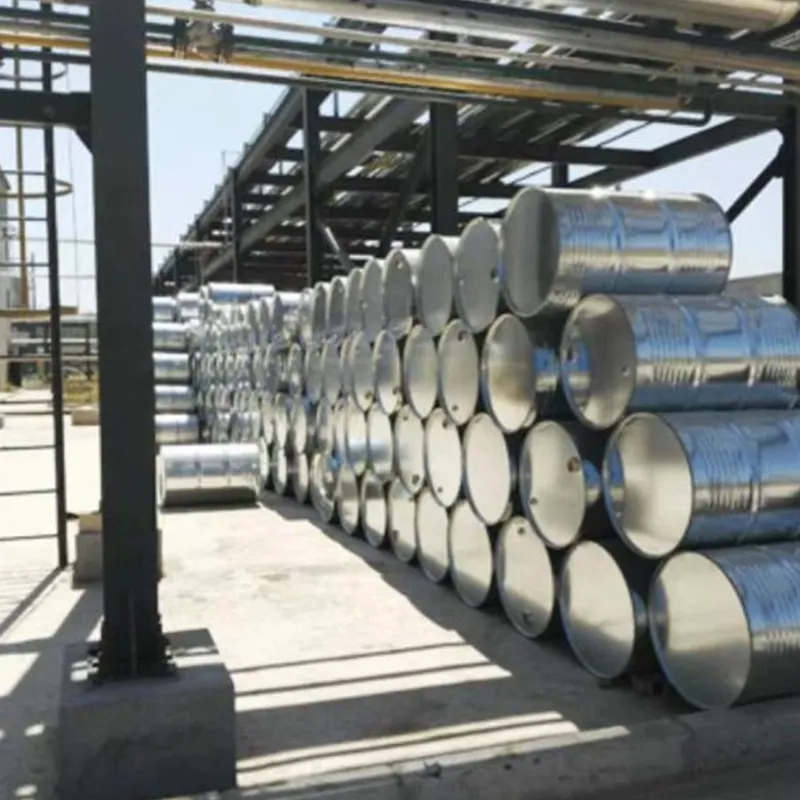
The Process of Producing Monosodium Glutamate and Its Applications in Food Industry
The Process of Producing Monosodium Glutamate Understanding MSG
Monosodium glutamate (MSG) is a widely used flavor enhancer known for its ability to amplify the savory taste of food. Commonly found in Asian cuisine, processed foods, and snacks, MSG has garnered both popularity and controversy since its widespread introduction. Understanding the process of producing MSG provides insights into both its culinary application and the complexities surrounding its use.
The Chemical Basis of MSG
MSG is the sodium salt of glutamic acid, an amino acid that occurs naturally in many foods, including tomatoes, cheese, and mushrooms. Glutamic acid plays a significant role in human metabolism and is a key player in transmitting signals within the brain. When glutamic acid combines with sodium, it forms monosodium glutamate, which enhances the umami flavor—recognized as the fifth taste alongside sweet, sour, bitter, and salty.
Fermentation The Primary Production Method
The most common method for producing MSG is through fermentation, a biotechnological process that utilizes microorganisms. The production begins with a carbohydrate source, which is often derived from raw materials like sugarcane, corn, or cassava. These sources undergo hydrolysis to break down complex carbohydrates into simpler sugars.
Once the sugars are available, they are inoculated with specific strains of bacteria, typically *Corynebacterium glutamicum* or *Brevibacterium flavum*. These bacteria have the unique ability to metabolize the sugars and produce glutamic acid as a byproduct. This fermentation process takes place in large bioreactors under controlled conditions that promote optimal growth and production of the bacteria. Factors such as temperature, pH, and oxygen levels are carefully monitored to ensure maximum yield and efficiency.
After fermentation, the broth contains a mixture of glutamic acid, byproducts, and microbial biomass. The next step is to extract glutamic acid from this mixture through a series of purification processes. First, the broth undergoes centrifugation to separate the microbial cells from the liquid. The supernatant, which contains glutamic acid, is then treated chemically to adjust the pH and precipitate impurities.
monosodium glutamate process

Crystallization and Sodium Addition
Following purification, the glutamic acid is converted into monosodium glutamate by the addition of sodium hydroxide or sodium carbonate. This reaction neutralizes the acidic glutamic acid, resulting in the formation of MSG. The product is then subjected to crystallization to achieve the desired purity and form. When the mixture cools, MSG crystallizes out of the solution.
The crystallization process can be repeated multiple times to ensure that the final product is of high quality with minimal impurities. Once the desired crystal size and purity are achieved, the MSG is dried and packaged for distribution. The entire process often takes several days, reflecting the complexity of fermentation and the necessary purification steps.
Quality Control and Regulation
Quality control is a critical component of MSG production. Manufacturers implement rigorous testing to meet safety and purity standards. Regulatory bodies, such as the U.S. Food and Drug Administration (FDA), have classified MSG as generally recognized as safe (GRAS). However, some individuals report sensitivity to MSG, leading to discussions about its safety profile. As a result, labels often indicate the presence of MSG to inform consumers.
Conclusion
The production of monosodium glutamate is a fascinating interplay of biology, chemistry, and technology. Through fermentation, glutamic acid is harnessed from natural sources and transformed into a flavor enhancer that has transcended culinary boundaries. Despite its controversy, MSG continues to play a significant role in the way we experience food, making it a subject of interest for both consumers and industries alike. As food science evolves, the methods and understanding of MSG production may also advance, ensuring that this flavor enhancer maintains its place in modern gastronomy while addressing health concerns and consumer preferences.
-
Sodium Dichloroisocyanurate Safety Handling ProtocolsNewsJul.29,2025
-
Mining Chemicals for Copper Extraction Processes GuideNewsJul.29,2025
-
Fertilizer for Sale Shipping and Storage TipsNewsJul.29,2025
-
Dimethyl Disulfide as Sulfurizing AgentNewsJul.29,2025
-
Benzotriazole Safety Data Handling and Storage GuidelinesNewsJul.29,2025
-
Ammonium Bicarbonate Safety Handling Storage GuidelinesNewsJul.29,2025
-
The Transformative Role Of Trichloroisocyanuric Acid in Water TreatmentNewsJul.23,2025
Hebei Tenger Chemical Technology Co., Ltd. focuses on the chemical industry and is committed to the export service of chemical raw materials.
-

view more DiethanolisopropanolamineIn the ever-growing field of chemical solutions, diethanolisopropanolamine (DEIPA) stands out as a versatile and important compound. Due to its unique chemical structure and properties, DEIPA is of interest to various industries including construction, personal care, and agriculture. -

view more TriisopropanolamineTriisopropanolamine (TIPA) alkanol amine substance, is a kind of alcohol amine compound with amino and alcohol hydroxyl, and because of its molecules contains both amino and hydroxyl. -

view more Tetramethyl Thiuram DisulfideTetramethyl thiuram disulfide, also known as TMTD, is a white to light-yellow powder with a distinct sulfur-like odor. It is soluble in organic solvents such as benzene, acetone, and ethyl acetate, making it highly versatile for use in different formulations. TMTD is known for its excellent vulcanization acceleration properties, which makes it a key ingredient in the production of rubber products. Additionally, it acts as an effective fungicide and bactericide, making it valuable in agricultural applications. Its high purity and stability ensure consistent performance, making it a preferred choice for manufacturers across various industries.











